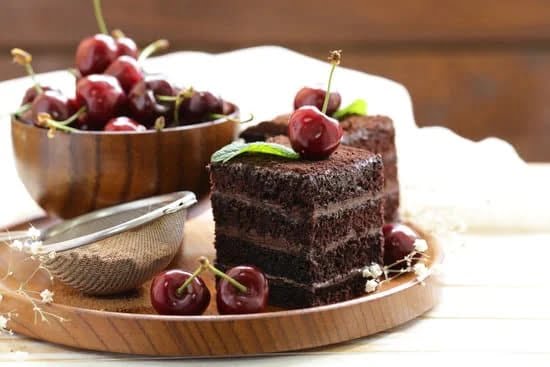Icing for cake decorating writing plays a vital role in creating stunning and memorable cakes. Beyond its delicious taste, icing serves as the canvas for transforming a plain cake into a work of art. From adding intricate designs to personalized messages, icing elevates the appearance and taste of any cake. In this article, we will explore the importance of icing in cake decoration and discover different types of icing that can be used to achieve professional-looking results.
First and foremost, icing is a crucial element in cake decoration because it enhances the visual appeal of the cake. Whether you are looking to create an elegant wedding cake or a fun birthday cake, the right icing can make all the difference. It provides a smooth base for decorations and acts as a foundation for any design or message you wish to convey.
Not only does it enhance appearance, but icing also contributes to the overall taste experience. The right texture, flavor, and consistency can complement the flavors of the cake itself and add depth to each bite. With various types of icing available, such as buttercream, fondant, and royal icing, there are endless possibilities for creating unique flavors that perfectly complement your chosen cake recipe.
In this article, we will explore different types of icing in detail and discuss their specific uses in cake decorating writing. Additionally, we will provide a step-by-step guide on how to ice cakes with writing effectively, along with tips and tricks for achieving flawless results. So let’s dive into the world of cake decorating writing and unlock your creativity using different icing techniques.
Different Types of Icing
Buttercream icing: its creamy texture and versatility
One of the most commonly used types of icing for cake decorating writing is buttercream icing. It is loved for its smooth, creamy texture that adds a luxurious touch to any cake. Buttercream icing is made by combining butter, powdered sugar, and flavorings, such as vanilla extract or cocoa powder. This type of icing can be easily colored using food coloring, allowing for endless possibilities when it comes to design and decoration.
The versatility of buttercream icing makes it suitable for various cake designs and themes. It can be easily piped onto cakes using different tips to achieve different patterns and textures. Whether you want to create smooth borders or intricate flowers, buttercream icing can be manipulated to suit your desired look. Additionally, buttercream can be used as a filling between cake layers, adding an extra layer of flavor and richness.
Fondant icing: a smooth and glossy finish for professional-looking cakes
Fondant icing is another popular choice when it comes to creating professional-looking cakes with flawless finishes. Made from gelatin, water, sugar, vegetable fat, and other ingredients, fondant provides a smooth surface on which to write or decorate. It is rolled out into a thin sheet and placed over the cake before being smoothed out to remove any air bubbles or wrinkles.
Fondant provides an ideal canvas for intricate designs and decorations on cakes. It can be easily molded into various shapes or used as a base for sculpted figures or objects. When it comes to writing on fondant-covered cakes, edible markers or food-safe pens are often used instead of piping with traditional icing. This allows for precise lettering without the risk of smudging or uneven lines.
Royal icing: ideal for intricate designs and decorations
Royal icing is a type of icing made from egg whites and powdered sugar that dries to a hard, glossy finish. It is often used to create intricate designs and decorations, making it an ideal choice for cake writing. Royal icing can be piped onto cakes in many different patterns and textures, ranging from delicate lace-like designs to bold and intricate lettering.
The consistency of royal icing plays a crucial role in achieving clean and precise cake writing. It needs to be thick enough to hold its shape when piped, yet smooth enough for easy flow through the piping tip. Many decorators prefer using royal icing for detailed work because of its ability to dry quickly and firm up, allowing for more stability in the design.
When choosing the type of icing for cake decorating writing, it is important to consider the desired look and feel of the finished cake. Buttercream icing offers a creamy texture and versatility, while fondant provides a smooth surface for precise lettering.
Royal icing is ideal for intricate designs and decorations. Each type of icing has its own unique properties that can elevate the appearance and taste of a cake, allowing decorators to unleash their creativity and bring their visions to life.
Essential Tools and Ingredients for Icing
When it comes to cake decorating writing, having the right tools and ingredients is essential to achieve professional-looking results. The art of cake writing relies heavily on the use of piping bags, tips, food coloring, and various flavors and extracts. These elements not only enhance the visual appeal of the cake but also add depth and taste to the icing.
Piping bags and tips are the key tools in achieving various patterns and designs when writing on a cake. Piping bags allow for precise control over the flow of icing, while different tips create different effects such as swirls, dots, or elegant script. It is important to have a range of tip sizes to choose from, depending on the desired lettering style or complexity of the design.
Food coloring plays a crucial role in making cake writing visually appealing. With a wide variety of colors available, decorators can create vibrant or subtle shades to match any theme or occasion.
Gel-based food coloring is often preferred because it doesn’t alter the consistency of the icing like liquid food coloring does. It is also important to note that too much food coloring can affect the taste of the icing, so it’s best to add it gradually until reaching the desired hue.
Various flavors and extracts can be added to icing not only for taste but also to complement other components of the cake. Vanilla extract is a classic choice that pairs well with almost any flavor, while fruity extracts like lemon or orange can provide a refreshing twist. For chocolate cakes, adding cocoa powder or melted chocolate will intensify its flavor and richness.
| Tools | Ingredients |
|---|---|
| Piping bags | Food coloring (gel-based) |
| Piping tips | Variations of flavors and extracts (e.g., vanilla, lemon, chocolate) |
Step-by-Step Guide for Icing Cake Writing
Decorating a cake with beautifully written words or messages requires precision and technique. Follow this step-by-step guide to achieve clean and professional-looking cake writing with icing.
1. Prepare the icing consistency: Before you begin writing on the cake, it is important to prepare the icing with the right consistency. For writing, your icing should be thin enough to flow smoothly through the piping bag but thick enough to hold its shape. To achieve this, add small amounts of water or liquid (such as milk or lemon juice) at a time until you reach the desired consistency.
- TIP: If your icing becomes too thin, add powdered sugar to thicken it.
- TIP: If your icing becomes too thick, gradually add more liquid.
2. Choose the appropriate piping tip size for legible writing: The size of the piping tip plays a crucial role in creating legible and clean writing on a cake. For smaller cakes or intricate designs, use a small round tip (such as a #1 or #2). However, for larger cakes or bolder lettering, opt for larger round tips (such as a #3 or #4).
- TIP: It is always advisable to practice piping on parchment paper before proceeding to write directly on the cake.
3. Practice piping techniques for achieving clean and precise lettering: Piping letters onto a cake requires steady hand movements and control over the pressure applied on the piping bag. Start by lightly pressing on the bag while moving it at an even pace across the surface of the cake. Remember to take breaks between each letter to release any trapped air and prevent bubbles in the icing.
- TIP: If you make a mistake or want to reposition a letter, gently scrape it off with a toothpick or small spatula and start over before the icing sets.
- TIP: For longer words or phrases, you can use a long, continuous motion while maintaining an even pressure on the piping bag to achieve consistent letter sizes.
By following these step-by-step instructions, you will be able to effectively write on cakes using icing. Practice is key, so don’t be discouraged if your first attempt is not perfect. With time and patience, you will improve your cake writing skills and be able to create beautiful and personalized messages for any occasion.
Tips and Tricks for Perfect Cake Writing
Cake writing is a skill that requires precision and practice. With the right tips and tricks, you can achieve perfect cake writing that will impress your friends and family. Here are some valuable tips to help you improve your cake writing skills:
- Keeping a steady hand while writing: One of the most important factors in achieving neat cake writing is having a steady hand. It’s crucial to have a firm grip on the piping bag and control the pressure applied to create uniform strokes. Practicing good posture and finding a comfortable position can also contribute to better control.
- Using a stencil or guide for evenly spaced letters: To ensure even spacing between your letters, consider using stencils or guides. These tools can be easily created with parchment paper or purchased commercially. Place the guide on top of your cake and use it as a reference point to guide your piping movements.
- Correcting mistakes and smudges without ruining the overall design: Mistakes happen, but they don’t have to ruin your cake design. If you make a mistake while writing, gently wipe off the icing with a damp cloth or toothpick before it dries completely. You can then pipe over the corrected area with fresh icing.
- Experimenting with different fonts and calligraphy styles: Don’t be afraid to get creative with your cake writing. Explore different fonts and calligraphy styles to add personality and flair to your designs. Practice drawing these styles on paper first before attempting them on a cake, as it may require some trial and error.
- Combining icing colors for eye-catching designs: Take your cake writing to the next level by combining different colors of icing. Use multiple piping bags filled with different colored icings, fitted with small round tips, to achieve intricate designs such as ombre effects or rainbow lettering.
- Adding embellishments for enhanced writing: Embellishments like edible pearls or glitter can elevate your cake writing even further. Consider adding these small details to particular letters or as decorative borders around your message. Just make sure they are edible and safe for consumption.
By applying these tips and tricks, you’ll be able to improve your cake writing skills and create impressive designs on your cakes. Remember, practice makes perfect, so don’t hesitate to experiment and personalize your creations with unique messages and designs.
Advanced Techniques for Icing Cake Writing
When it comes to cake writing, there is no limit to the creativity that can be achieved with icing. Taking your cake decorating skills to the next level involves incorporating advanced techniques that go beyond basic lettering. In this section, we will explore some advanced techniques for icing cake writing that will truly impress your friends and family.
One way to elevate your cake writing is by exploring different fonts and calligraphy styles. Instead of sticking to traditional lettering, try experimenting with script fonts or elegant calligraphy. These styles can add a touch of sophistication and elegance to any cake design. Practice on parchment paper before attempting it directly on the cake to ensure accuracy and precision.
Combining icing colors is another way to create eye-catching designs and effects in cake writing. By using multiple colors in your piping bag, you can achieve gradient effects or create vibrant ombre lettering. Start by preparing separate batches of icing in different colors. Then, fill a piping bag with each color side by side, allowing them to merge naturally as you pipe onto the cake.
Adding embellishments like edible pearls or glitter can also enhance your cake writing. These small details can give your cakes a glamorous and festive touch. Edible pearls can be strategically placed around the letters for an elegant look, while edible glitter can add a sparkle effect that catches the eye. Secure these embellishments using a small amount of icing as glue.
By mastering these advanced techniques, you can take your cake writing skills to new heights. Don’t be afraid to experiment and push the boundaries of what is possible with icing. Your cakes will become works of art that are sure to impress everyone who sees them.
Remember, practice makes perfect when it comes to icing cake writing. Take the time to practice these techniques and soon you’ll have mastered beautifully written messages on your cakes.
Common Mistakes to Avoid in Cake Writing
Cake writing can be a challenging skill to master, but avoiding common mistakes can help ensure that your lettering is legible and enhances the overall design of your cake. Here are some mistakes to avoid when it comes to cake writing:
- Writing illegibly or inconsistently: One of the most important aspects of cake writing is ensuring that the letters are clear and easy to read. Take your time and use a steady hand when piping the letters onto the cake. Practice beforehand to get comfortable with the pressure required for consistent lines.
- Overloading the piping bag, causing uncontrollable oozing: It can be tempting to fill up the piping bag with a large amount of icing, but overfilling it can lead to messy results. Only fill the bag with enough icing that you can comfortably handle and control. This will prevent excess icing from oozing out and ruining your design.
- Not allowing enough drying time, leading to smudges and smeared writing: Patience is key when it comes to cake writing. Allow ample drying time for your letters before moving or transporting the cake. Rushing this step can result in smudges or smears on the icing, making your writing look messy.
It’s important to remember that practice makes perfect when it comes to cake writing. Take your time, experiment with different techniques, and learn from any mistakes along the way. With dedication and patience, you’ll be able to create beautiful and professional-looking cake decorations that are sure to impress.
| Mistake | Consequences |
|---|---|
| Writing illegibly or inconsistently | Difficult-to-read letters that don’t enhance the design |
| Overloading the piping bag | Messy oozing icing that ruins the design |
| Not allowing enough drying time | Smudged or smeared writing that looks messy |
Troubleshooting Icing Issues in Cake Writing
Icing Consistency
One common issue that cake decorators may encounter when writing with icing is having icing that is too runny or too thick. The consistency of the icing plays a crucial role in achieving clean and precise lettering.
If the icing is too runny, it will not hold its shape and may cause the letters to spread or blend together. On the other hand, if the icing is too thick, it will be difficult to pipe smoothly and may result in uneven lettering.
To adjust the consistency of the icing for optimal writing, there are a few techniques you can try. If your icing is too runny, you can thicken it by gradually adding powdered sugar until you reach the desired consistency.
On the other hand, if your icing is too thick, you can thin it down by adding small amounts of water or milk until it becomes easier to pipe. It’s important to make these adjustments gradually and test the consistency as you go to avoid overcompensating.
Air Bubbles and Lumps
Another issue that can affect the quality of cake writing is air bubbles or lumps in the icing. These imperfections can make it difficult to achieve smooth and flawless lettering. Air bubbles may cause breaks in the flow of icing while writing, while lumps can create bumps or irregularities on the surface.
To avoid air bubbles, it’s essential to properly mix your icing before filling your piping bag. Use a spatula or whisk to gently stir or knead the icing until any trapped air bubbles are released. For lumps in the icing, consider using a sieve or strainer to remove any clumps before transferring it into your piping bag.
If air bubbles or lumps still occur while piping, there are some troubleshooting steps you can take. First, ensure that you are using consistent pressure when squeezing the piping bag so that there are no sudden bursts of air. Additionally, you can lightly tap the piping bag against a flat surface to release any trapped air before starting to write.
Humidity and Temperature
Humidity and temperature can also have an impact on the icing’s durability and quality when writing on a cake. In high humidity environments, the moisture in the air can affect the consistency of the icing, making it softer and more prone to melting or smudging. Similarly, extreme temperatures can cause the icing to become too soft or too stiff, resulting in difficulties with piping.
To combat issues related to humidity, it’s best to work in a cool and dry environment whenever possible. You can also use a dehumidifier or air conditioner to regulate the room conditions if necessary. When it comes to temperature, be mindful of how long you leave your iced cake out in warm areas as excessive heat can cause the icing to become unstable.
In cases where you cannot control the surrounding environment, there are some steps you can take to mitigate these effects. Placing the iced cake in a refrigerated environment for several minutes before writing can help firm up the icing and make it less susceptible to smudging. If working in a humid environment, consider using a fan or portable air conditioner near your workspace to create airflow that will help dry and set your icing faster.
Conclusion
In conclusion, icing for cake decorating writing is an essential element that can elevate the appearance and taste of any cake. Throughout this article, we have discussed the importance of icing, different types of icing, and the essential tools and ingredients needed for successful cake writing. We have also explored step-by-step guides, tips, and advanced techniques to achieve perfect cake writing while avoiding common mistakes.
With the knowledge and skills acquired from this article, readers can unlock their creativity and truly personalize their cakes with unique messages and designs. The possibilities are endless when it comes to cake writing using various icing techniques.
By incorporating different fonts, calligraphy styles, icing colors, and embellishments like edible pearls or glitter, one can create eye-catching designs that will impress guests at any occasion. The key is to experiment with different techniques and let your imagination run wild.
So go ahead and unleash your creativity with icing for cake decorating writing. Surprise your loved ones with beautifully decorated cakes that not only taste delicious but also convey heartfelt messages or showcase intricate designs. With practice and patience, you will become a master at creating stunning works of art on cakes using nothing but icing.
Frequently Asked Questions
What icing is used for writing on cakes?
The icing that is commonly used for writing on cakes is called royal icing. Royal icing is made from a mixture of powdered sugar, egg whites or meringue powder, and a small amount of water or lemon juice. It has a smooth texture that can be easily piped onto cakes to create intricate designs, including writing.
What kind of icing can you write on?
While royal icing is the most popular choice for writing on cakes, other types of icings can also be used depending on personal preference and the desired effect. Buttercream icing, for example, can be a great option for writing because it has a soft and creamy texture that can be easily piped or spread onto the cake surface.
Fondant icing is another alternative that can be rolled out and cut into letters or shapes to be placed on top of the cake.
How to make icing letters for cake?
To make icing letters for a cake, there are several methods you can try. One common approach is to use royal icing with a piping bag fitted with a small round tip. Start by practicing your lettering on a piece of parchment paper or wax paper until you feel comfortable with the technique. Squeeze the piping bag gently while guiding it along to form each letter, maintaining consistent pressure for even lines.
Another method involves using fondant or gum paste to shape each letter by hand or with the help of alphabet-shaped molds. Roll out the fondant or gum paste thinly, cut out individual letters using an alphabetic cutter or template, and carefully place them on the cake’s surface using edible glue or water as an adhesive. Whichever method you choose, remember to allow enough time for the letters to dry and set before placing them on the cake to prevent any smudging or damage during transportation and serving.

Welcome to our cake decorating blog! My name is Destiny Flores, and I am the proud owner of a cake decorating business named Cake Karma. Our mission is to provide delicious, beautiful cakes for all occasions. We specialize in creating custom cakes that are tailored specifically to each customer’s individual needs and tastes.





